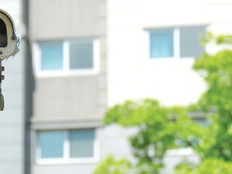How Do Bluetooth Beacons Work?
“Once deployed, Bluetooth beacons don’t make a two-way connection with any other device,” says Kapil Asher, senior director of enterprise Internet of Things solutions at Kontakt.io. “They pulsate information, then the receivers grab that information.”
Consider this comparison: Flipping the light on in your living room like turning on the Bluetooth on your phone. It remains on and is directly connected to another source (such as headphones) for the duration that it’s on. Beacons, meanwhile, are more like lighthouses: They send data in frequent bursts to any authorized device nearby that wants the information.
“Whether anyone’s listening or not, the beacons are pulsating information,” Asher says. “If your campus has an app that’s told to look for those signals, then users will get that information, because the beacon is always pulsating.”
For example, researchers at the University of Alabama at Birmingham have been using this technology to improve pedestrian safety on campus. The app, called StreetBit, uses BLE beacons to “provide road safety to distracted pedestrians,” according to a UAB press release.
When installed on pedestrians’ phones, the app sends “auditory and visual warnings” to pedestrians when they are approaching areas where beacons are installed. If a person is using a cellphone while approaching the intersections where the beacons are placed, notifications are sent as a reminder to pay attention.
Results from a study and a follow-up trial using the technology show that pedestrians were 64 percent less likely to become distracted during the alert phase and 52 percent less likely to do so later, even without the notifications.











